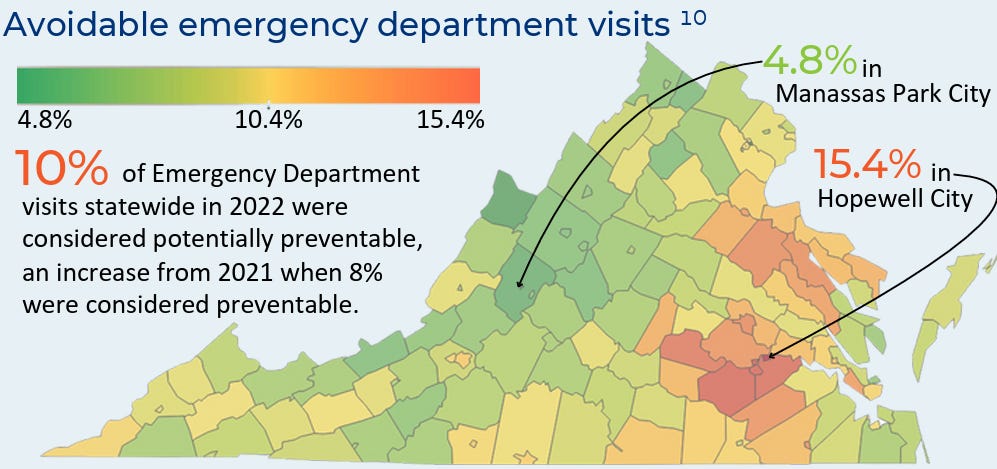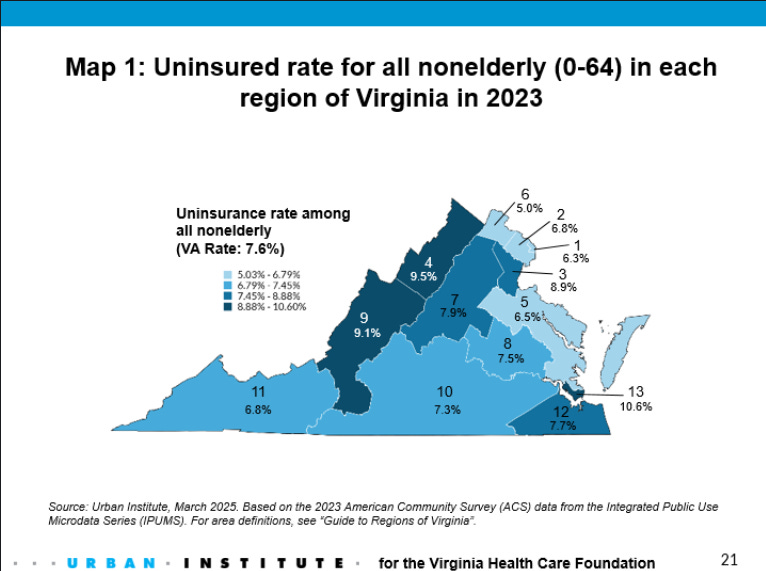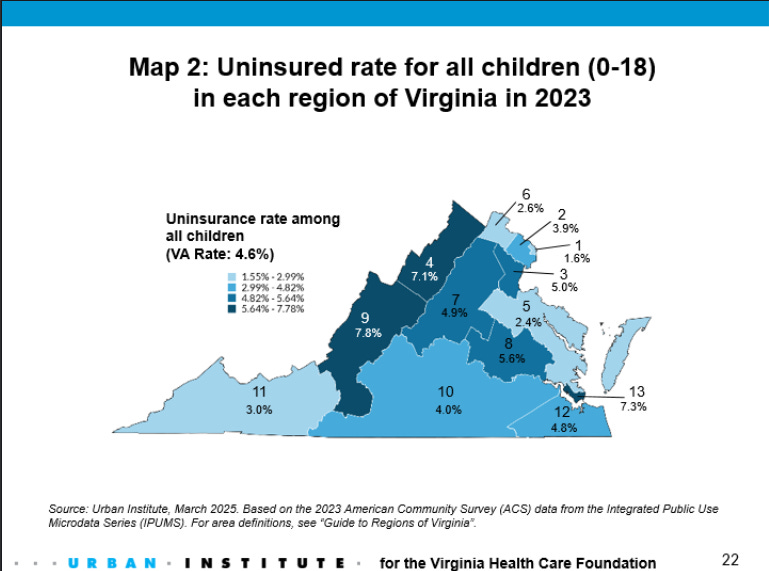DATA MONDAY - Access to Primary Care Physicians
In this first in an occasional series, the Advance introduces readers to key studies and data that address pressing concerns in our communities.
By Martin Davis
EDITOR-IN-CHIEF
Email Name
The news last week that the Moss Free Clinic is closing its doors is again drawing attention to the access to healthcare in our region. To better understand this extent of the problem, the Advance turned to research produced by the Virginia Ambulatory Care Outcomes Research Network, the Virginia Center for Health Innovation, and the Virginia Health Care Foundation to explore some key healthcare data about primary healthcare in the commonwealth and in our region.
Virginia Ambulatory Care Outcomes Research Network
Virginia ACORN is a collaborative partnership between primary care practices and a multidisciplinary team of researchers devoted to evaluating and improving the quality of primary health care. Research results are intended to inform and influence decisions along the continuum of service to patients, from research to practice and policy.
In its report, “Primary care continues to serve Virginia under stress,” we discover not just the importance of quality primary care physicians, but also the significant decline in their presence since COVID.
The report begins by noting that “Primary care is the only part of the U.S. health care system that results in longer lives and more equity.”
That statement underscores the dangers facing Virginians’ health care in light of the following data.
The increased demand for primary care services due to Medicaid expansion and the COVID-19 pandemic has caused significant strain on primary care. Based on practice survey responses…
Virginia Center for Health Innovation
Launched in 2020 by VCHI, the Virginia Task Force on Primary Care is charged with analyzing and reporting on areas critical to support primary care. It’s Virginia Primary Care Scorecard, 2024 provides a deep dive into Virginia’s primary care environment, providing a look in five key areas:
Expenditures: Measures financial investment in primary care and disparities in resources
Workforce: Measures the capacity of primary care clinicians to care for Virginians and variation in workforce by geographic region
Primary Care Use: Measures how Virginians are using primary care
Outcomes: Measures the health and well-being of Virginians based on primary-care sensitive metrics
Patient Experience: Measures experiences related to accessing primary care
Here are some select key findings from that report:
Caroline, King George, Spotsylvania and Stafford counties do not have enough primary care physicians to serve their populations.
Caroline, Fredericksburg, King George, Spotsylvania and Stafford show a relatively low use of primary care physicians by insured residents using a broad definition of PCPs, which include nurse practitioners.
Quality of Life outcomes are better for Stafford, than for Caroline, King George, Fredericksburg, and Spotsylvania.
Caroline County has a relatively higher percentage of avoidable emergency department visits.
Virginia Health Care Foundation
A public/private partnership, VHCF helps uninsured Virginians and those who live in underserved communities obtain medical, dental and mental health care. VHCF support helps free clinics, community health centers and a variety of other nonprofit organizations to expand both the types of care offered and the number of patients cared for each year.
VCHF in March 2025 released “A Profile of Virginia’s Uninsured,” a report compiled by the Urban Institute. There was good news in the report. “The 2025 Profile shows the lowest uninsured rates in Virginia since the Virginia Health Care Foundation (VHCF) began tracking them in 1996 (7.6% or 530,000 of nonelderly Virginians).”
However, there were significant variations among counties and localities in our region. The following slides are broken out by region. Fredericksburg and Stafford are in Region 3; Caroline, King George, and Spotsylvania are in Region 5
Uninsured rates for non-elderly are higher in Region 3 than in Region 5
There are more uninsured children in Region 3 than in Region 5
Uninsured rates for non-elderly adults with incomes below %138 of the federal poverty level are markedly higher in Region 5 than in Region 3.
Support the Advance with an Annual Subscription or Make a One-time Donation
The Advance has developed a reputation for fearless journalism. Our team delivers well-researched local stories, detailed analysis of the events that are shaping our region, and a forum for robust, informed discussion about current issues.
We need your help to do this work, and there are two ways you can support this work.
Sign up for annual, renewable subscription.
Make a one-time donation of any amount.
Local Obituaries
To view local obituaries or to send a note to family and loved ones, please visit the link that follows.
This article is published under Creative Commons license CC BY-NC-ND. It can be distributed for noncommercial purposes and must include the following: “Published with permission by FXBG Advance.”






















